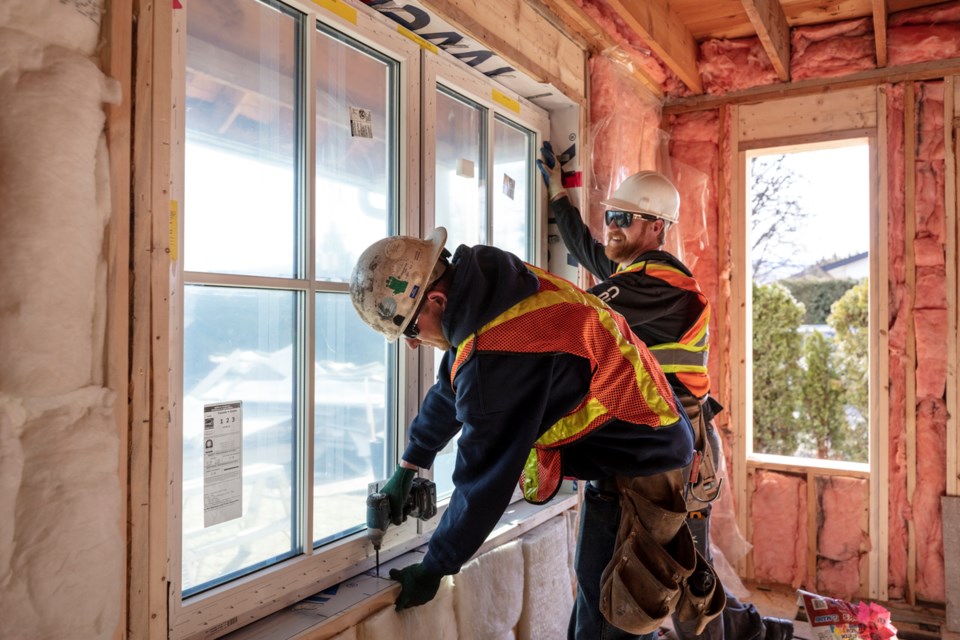, I discussed how a diversified approach helps reinforce B.C.’s energy reliability and sustainability—two of the three interdependent elements that make up the energy trilemma.
This time the focus is affordability and how this is supported by a diverse energy mix, energy efficiency programs and continued use of the existing gas system, with fuels like renewable natural gas[1] (RNG).
As noted in the previous articles, the energy trilemma is like a tripod. If one leg weakens, it threatens the whole structure. Each element can’t be thought of or managed in isolation. As a utility dedicated to meeting the energy needs of our customers, we’re focused on ensuring all three of those supports stay strong.
Given the investment required to lower emissions, keeping energy costs affordable for British Columbians will be challenging, but very important. It will involve careful planning and investment that must ensure we’ll meet present and future energy needs in the province while supporting the energy transition.
To help make this happen, we are listening to our customers and understanding their needs in developing programs such as our electric and gas demand side management plans, which aim to help them invest in measures that reduce their overall energy use and save money on their bills. We recently got the go-ahead from the B.C. Utilities Commission to invest a record $697.6 million in energy-efficiency initiatives, aimed at reducing energy use, helping customers potentially save 3.8 million gigajoules of gas and 115 gigawatts of electricity by the end of 2027. Together that's a reduction equal to the average annual energy use of approximately 41,400 houses in B.C.[2]
Part of our investment will go toward developing programs for dual fuel-heating systems so customers can pair an electric heat pump with a high-efficiency gas furnace, ensuring access to energy on colder days while helping to lower overall natural gas usage and emissions. Other initiatives include our Deep Energy Retrofit pilot program, which seeks to cut energy use in half in participating buildings with efficiency upgrades, and our Power Hours rewards program, which lets customers earn financial rewards by lowering their energy use in their homes during peak-demand hours. Customers will also be able to access information about their daily gas use, which can help them make more informed energy choices for their homes and businesses once our new Gas Advanced Metering Infrastructure project goes live.
While we envision a future of reduced gas and electric use through efficiency and technology, by increasing the supply of lower-carbon gases, using existing infrastructure, we can further support advancing provincial climate targets.
FortisBC recently commissioned market research company Leger to conduct a poll of B.C. residents, and found that British Columbians understand the value of having access to different energy choices and are supportive of how RNG and other renewable and low-carbon gases[3] can play a role in achieving a lower-carbon energy future.
Most B.C. residents―around 75 per cent―feel it is important B.C. families and businesses continue to have access to all available energy options. The poll also found that a similar proportion want to have continued access to a range of low-carbon energy options that will help address climate change while affordably and reliably meeting the province’s energy needs.
As the provider of both electricity and gas services in B.C., we’re in a unique position to understand the potential benefits of the two energy systems working together in a way that supports all our customers.
By considering greater co-ordination between our existing energy systems, we can contribute to energy affordability as part of a diversified energy future that helps ensure B.C. families and businesses get the energy they need at an affordable price.
Using our gas system during the winter peaks can enable greater electrification of sectors such as transportation and buildings as we work to help the province advance its climate goals. It will also help ensure the three parts of the energy trilemma stay in balance as we help progress the energy transition in B.C.
Roger Dall’Antonia is president and CEO of FortisBC.
[1] Renewable natural gas (also called RNG or biomethane) is produced in a different manner than conventional natural gas. It is derived from biogas, which is produced from decomposing organic waste from landfills, agricultural waste and wastewater from treatment facilities. The biogas is captured and cleaned to create RNG. When RNG is added to North America’s natural gas system, it mixes with conventional natural gas. This means we’re unable to direct RNG to a specific customer. But the more RNG is added to the gas system, the less conventional natural gas is needed, thereby reducing the use of fossil fuels and overall greenhouse gas emissions.
[2] Calculated using the , which assumes an energy intensity equal to approximately 101.9 GJ/household or 28.3 MWh/household.
[3] FortisBC uses the term renewable and low-carbon gas to refer collectively to the low-carbon gases or fuels that the utility can acquire under the Greenhouse Gas Reduction (Clean Energy) Regulation, which are: Renewable Natural Gas (also called RNG or biomethane), hydrogen, synthesis gas (from wood waste) and lignin. FortisBC’s renewable and low-carbon gas portfolio currently includes only Renewable Natural Gas. Other gases and fuels may be added to the program over time. Depending on their source, all of these gases have differing levels of lifecycle carbon intensity. However, all of these gases are low carbon when compared to the lifecycle carbon intensity of conventional natural gas. The current burner tip emission factor of RNG is 0.29 grams of carbon dioxide equivalent per megajoule of energy (gCO2e/MJ) and the current renewable and low-carbon gas portfolio lifecycle emissions are -22 gCO2e/MJ. This is below B.C.’s carbon intensity threshold for low-carbon gases of 36.4 gCO2e/MJ set out in the .


